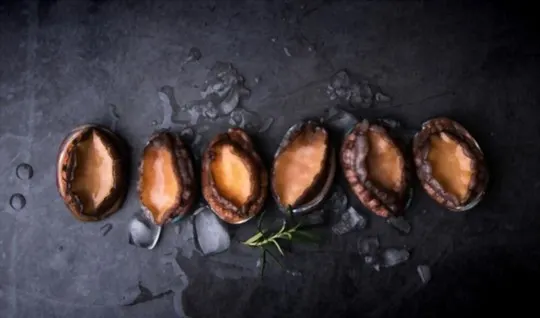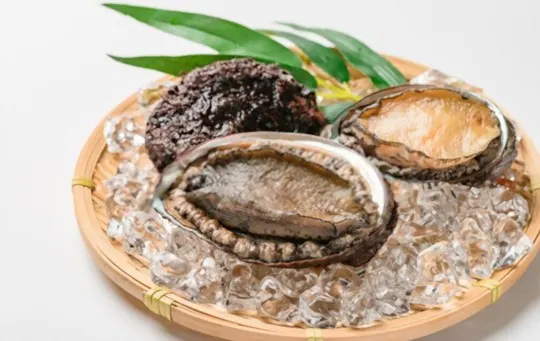Abalone is a luxurious delicacy sought after by the best chefs around the world.
But what does abalone taste like? Abalone resembles the texture of scallops or squid.
It is one of the most expensive shellfish in the world.
The naturally buttery and salty flavor acquired from the seawater it lives in is distinct and unforgettable.
Unlike typical fast food fare, abalone is a refined and elegant meal.
Although it isn’t popular in America, it’s still considered a sought-after dish.
So, if you’re looking for a sophisticated gastronomical experience, be sure to try abalone at least once in your lifetime.
What is Abalone?

Abalone is a precious hand-sized sea snail that calls the coastal salt waters home.
As a gastropod mollusk belonging to the Haliotidae family, abalone is a univalve with a shell on one side only.
This unique feature allows it to attach to rocky surfaces and feed off of algae.
Removing abalone from its firmly-held rock surface requires skill and patience, but the effort is worth it.
With a unique taste and texture, abalone is a rare and pricey delicacy.
Abalone is encased in a flat, spiral-shaped shell with small holes around the edges.
Seafood enthusiasts covet pearl-like meat all around the world.
Its nickname “ear shell” comes from its resemblance to the human ear, but its true value lies in its meat.
While overfishing has led to depleted stocks, abalone farming is rapidly gaining popularity globally.
From Great Britain to Japan, abalone is revered as a culinary delicacy, often served on special occasions and banquets.
What Does Abalone Taste Like?

With its natural saltiness and buttery flavor, abalone is widely recognized as one of the most luxurious shellfish in the world.
This prized delicacy has a chewy texture that falls right between scallops and squid.
It has a crunchiness that resembles a conch and a jellyfish-like sensation.
Abalone can be consumed raw or cooked, but grilling it seems to bring out its best flavors.
Simply place it on any grill, shell-side down, and let it cook in its juices.
The taste of abalone can vary slightly depending on how it is grown, with wild abalone having a stronger sea flavor and farmed abalone being softer.
Beyond its unique flavor and texture, abalone has been used as a functional food for over a thousand years because of its many health benefits.
This shellfish is rich in protein, iodine, and selenium, making it a highly nutritious food choice.
A 100-gram serving of abalone provides 17.1 grams of protein and only 105 calories.
Abalone is also an excellent source of iodine.
An average serving contains 95 mg of bioavailable iodine, which is essential for boosting the functioning of the thyroid gland.
Abalone also offers a decent amount of omega-3, a required fatty acid with anti-inflammatory properties.
A 100-gram serving of abalone provides 49 mg of DHA and EPA omega-3.
Lastly, abalone is an outstanding source of selenium, a mineral that boosts our immune system.
A 100-gram serving of abalone provides 44.8 mg of selenium, covering 64% of our daily selenium value.
How to Cook Abalone?

Abalone is known for its unique texture and flavor, and you can enjoy it in multiple ways.
From raw to pan-fried and braised, this delicacy has become a favorite of many food enthusiasts around the world.
Fresh abalone needs pounding and tenderizing before cooking to avoid ending up with a tough and chewy dish.
One way to enjoy abalone is by eating it raw, which is a common practice in Japan.
The abalone is carefully removed from the shell, washed, and sliced into thin cuts.
It is served with soy sauce, wasabi, and shiso leaves.
Pan-frying is another popular method of cooking abalone.
In western countries, it is coated with flour, salt, and pepper and then pan-fried and served with a squeeze of lemon.
For those who prefer a tender and flavorful dish, braising is the way to go.
In Chinese cuisine, chefs braise abalone with dried shiitake mushrooms in chicken stock.
Oyster sauce, Shaoxing rice wine, ginger, and garlic serve as additional flavor.
The result is a mouth-watering dish that is both sweet and tender, with umami-packed flavors.
Whether you prefer your abalone raw, pan-fried, or braised, one thing is for sure: it is worth trying out.
Conclusion
The taste of abalone is truly one-of-a-kind.
Its meaty composition and subtle sweetness solidify a unique culinary experience that is both delicious and unforgettable.
Whether it’s grilled, pan-fried, or braised, abalone is a delicacy you shouldn’t miss.
Its rich umami flavor pairs faultlessly with a variety of dishes, from stir-fries to sushi rolls.
Overall, the taste of abalone is a testament to the wonders of the ocean and the culinary creativity of those who prepare it.
So, next time you have the shot to try abalone, be sure to savor every bite of this grand seafood treat.

Leave a comment